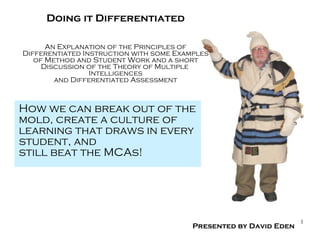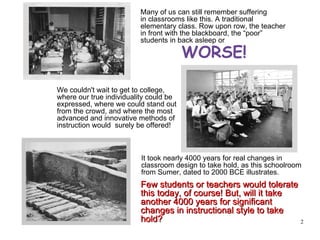The document discusses differentiated instruction, an educational approach that recognizes students learn in different ways. It begins by describing traditional classrooms and argues for change. It then explains differentiated instruction allows various pathways for students to demonstrate mastery based on their strengths. Examples show a student creating games, dioramas and presentations to illustrate comprehension. The document advocates for differentiated instruction and assessment to improve learning for all students.





















